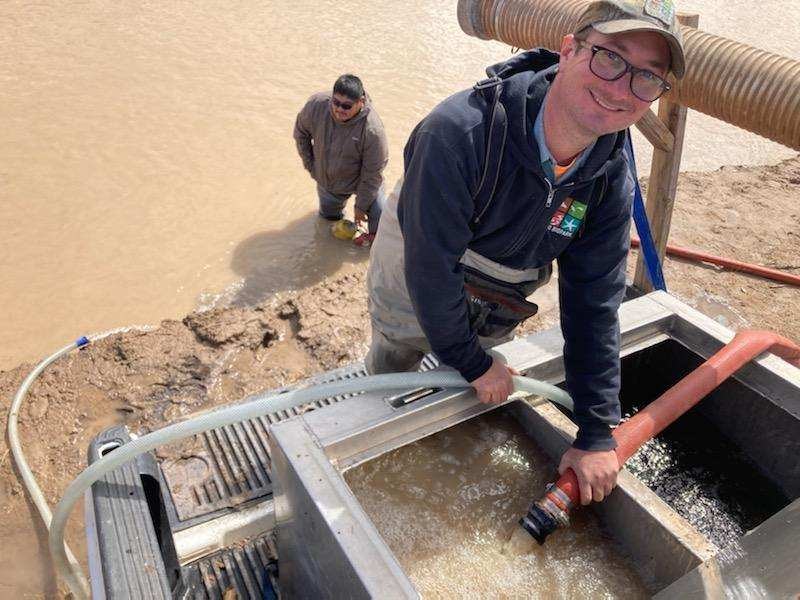
ABQ BioPark Completes Seasonal Silvery Minnow Release
Conservation effort has released over 50,000 endangered fish into the Rio Grande river since December.
ALBUQUERQUE, NM - The ABQ BioPark released 13,750 tagged Rio Grande silvery minnows into the river today, helping to continue the existence of this local endangered species.
The Rio Grande silvery minnow, a 2- to 4-inch long fish, was once one of the most common species in the Rio Grande, but by 1994 its population had declined so greatly that it was added to the federal Endangered Species List.
The BioPark has been part of the recovery program for the Rio Grande silvery minnow since 2000. Each spring, staff from the BioPark's Aquatic Conservation Facility collect eggs from the Rio Grande to raise in tanks at the BioPark. They also breed additional minnows from previously collected broodstock. Later, juvenile fish that are destined for release are "tagged" with a small colored mark so biologists can monitor the success of the program. Tagging also allows biologists to monitor some aspects of the minnows' behavior and how long the fish are surviving in different parts of the river.
"Last spring we were unable to collect any eggs for our program, due to continued drought conditions. " said Kathy Lang, curator of ABQ BioPark's Aquatic Conservation Facility. "This will impact our future captive spawning efforts. We are expecting more water in the river this year, so there will be extra effort from all cooperating agencies to help collect eggs.”
Despite the challenge last spring, the continued breeding program at the Aquatic Conservation Facility ensured there were still healthy fish to release this season.
This year, 22,500 fish were released in Albuquerque near Central Bridge and another 13,750 were released at a site near Sevilleta National Wildlife Refuge. The final release of the season today was in the river just below Socorro, New Mexico.
To date, the ABQ BioPark has released more than 900,000 silvery minnows in cooperation with the Middle Rio Grande Endangered Species Collaborative Program.
Watch a recap of the conservation program.
